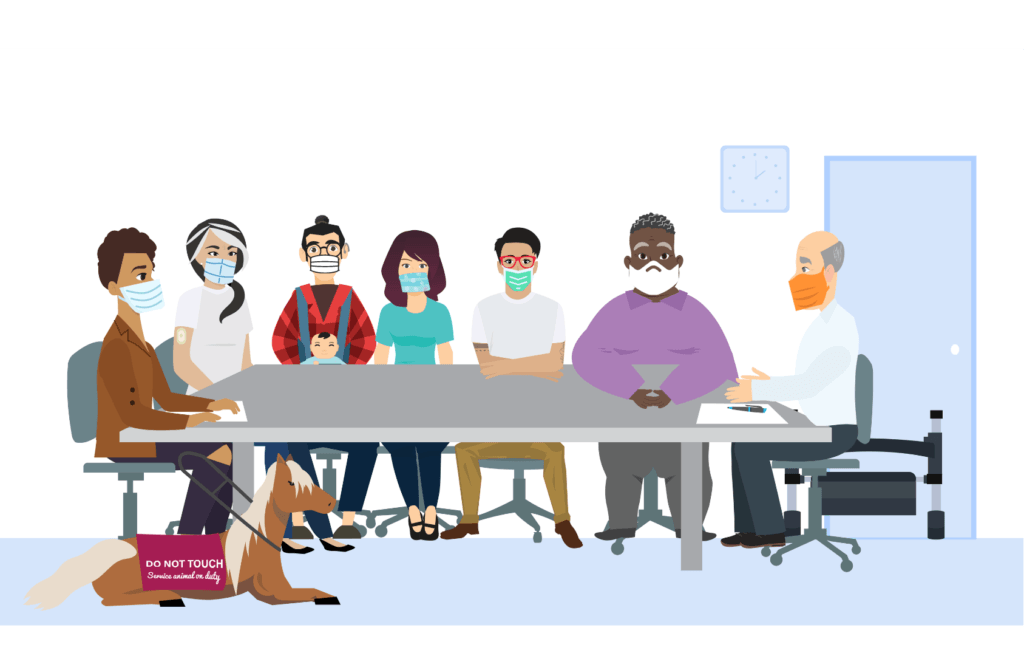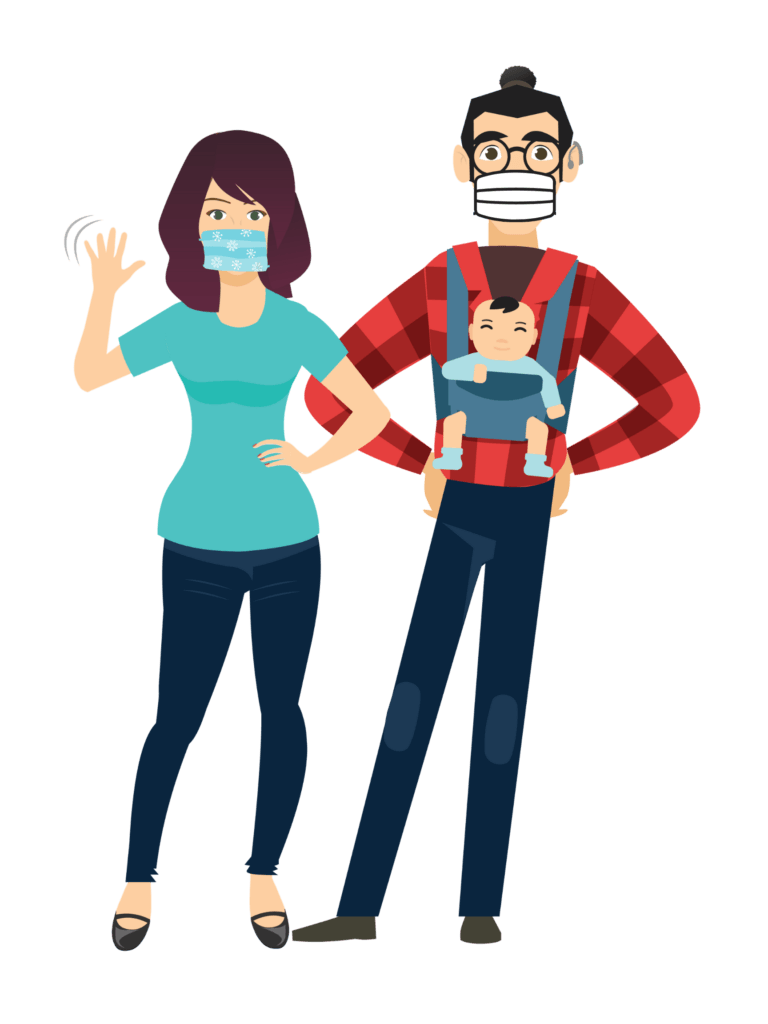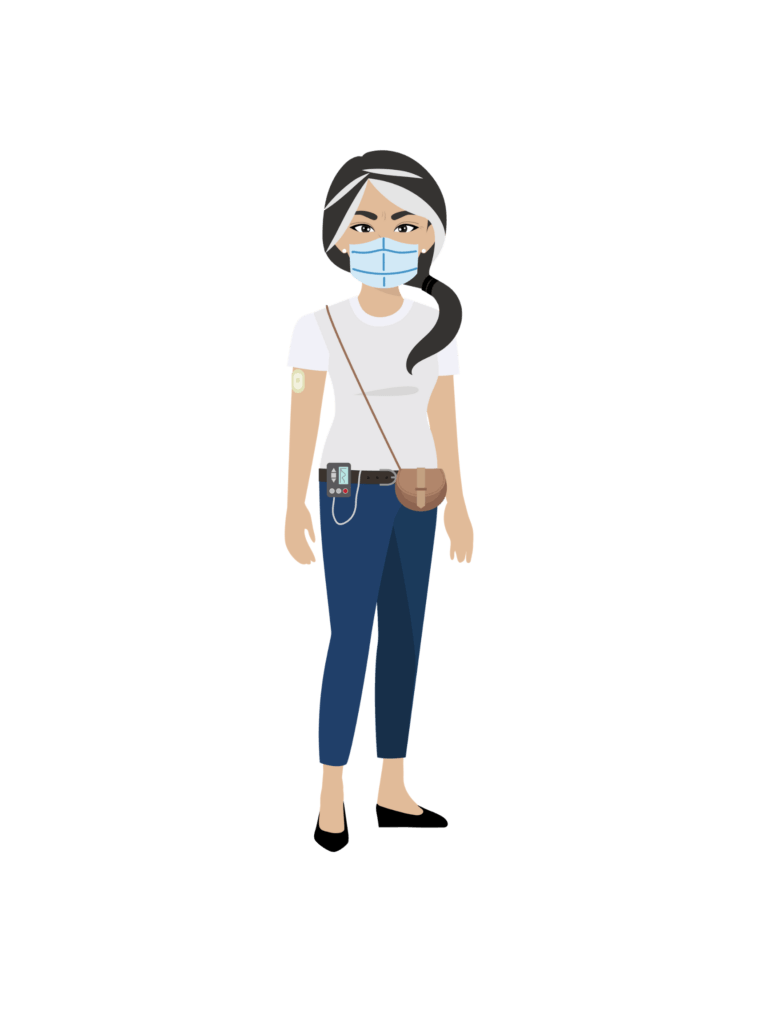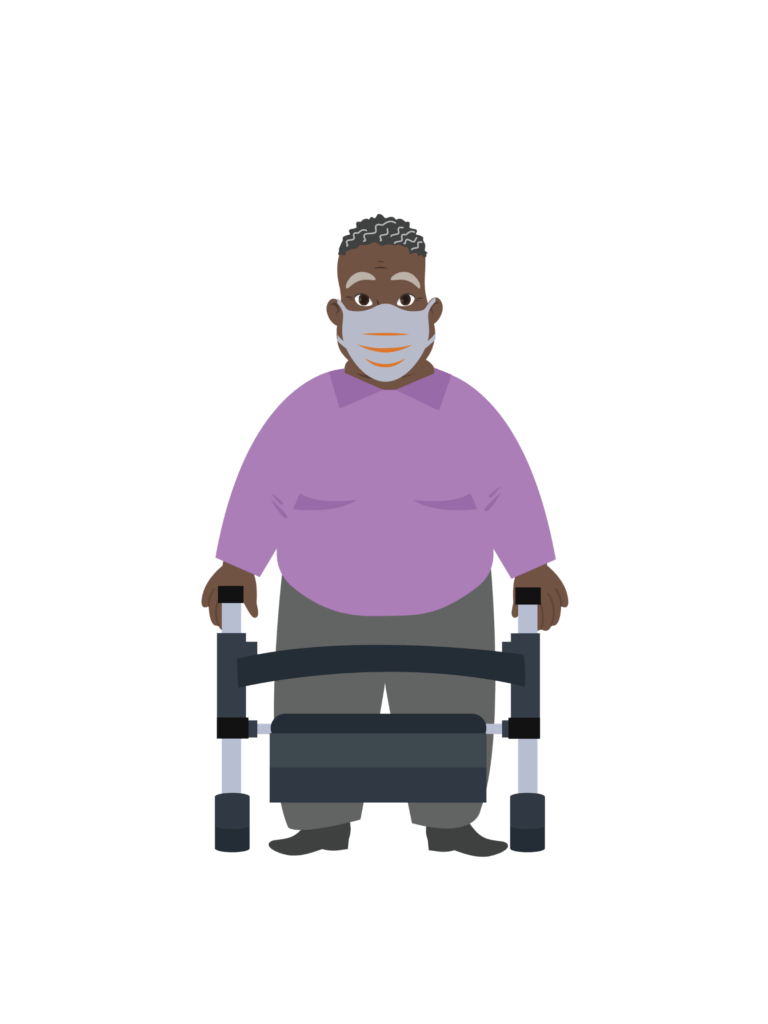The Americans with Disabilities Act (ADA) and Legal Rights _review


EM: Nice to see you again, Terrye. You remember Disasterville’s Prepared4ALL Action Team, right?

Marco [Signing]: I speak for all of us when I say we’re so glad to see you again.
We’ve spent a lot of time talking about our community and local government’s role. One of the local government’s main roles is to keep residents and visitors safe from harm, including harm from emergencies, disasters and pandemics.
The Americans with Disabilities Act (ADA) is about expanding access and opportunity to everyone. By following the ADA’s Title II, local governments provide equal access and opportunity to participate in emergency planning and other emergency, disaster and COVID-19 related government programs, services, activities and facilities.
It doesn’t matter if the local government provides these things directly or through third parties, like the American Red Cross or private nonprofit organizations. The ADA, Title II, and other parts of the ADA still apply.
There are different strategies an Action Team could use to discuss legal requirements. The U.S. Department of Justice’s Project Civic Access found that most communities reviewed for ADA compliance knew about their ADA obligations and were making progress towards meeting them. But there may be some communities where planners are unclear about the legal rules. These planners may need more education and explanation than those in other communities. Again, helping planners see ADA compliance as an opportunity to expand access to the whole community, rather than just as a legal checkbox they must complete, can help them see the bigger picture and get onboard with positive change.
There have been Project Civic Access compliance agreements with 206 localities in all 50 states, the District of Columbia, and Puerto Rico to date. To find out if your city, town, county or state was part of a Project Civic Access compliance review, including a review of emergency management policies and procedures, go to Project Civic Access.
Local governments must follow Title II of the ADA in emergency, disaster and pandemic services. The ADA, Title II also applies to related government programs, activities, and facilities. Other parts of the ADA also apply. It doesn’t matter if the local government provides these things directly or through third parties like the American Red Cross or private nonprofit organizations. The ADA still applies.
Local governments generally may not use eligibility criteria that screen out or tend to screen out people with disabilities. This means that, for example, a county can’t make rules like “only people who can walk can come to our emergency shelters during a disaster” or “to be able to ride our emergency evacuation bus you must be able to get on and off the bus by yourself.”

Rachel: Equal access may require reasonable modifications to programs, policies, procedures, architecture, equipment, services, supplies, and/or communication.
Reasonable modifications must be made unless they would fundamentally alter the nature of the program, service or activity or impose undue financial or administrative burdens. Local governments can often easily make reasonable modifications.
High cost alone isn’t likely to be an undue financial burden. Reasonable modifications are free for the person who needs them.

Marco [Signing]: There are several key pieces to the ADA in emergencies, disasters and pandemics and they all relate to our Same Time Access To Everyone (STATE) motto.
♿ Physical space is readily accessible and usable
+
????? Programs, activities and services are readily accessible and usable
+
?Communication with people with disabilities is equally as effective as communication with people without disabilities
+
? Reasonable modifications
=
????? Same Time Access To Everyone (STATE)

Marco [Signing]: Services must usually be provided in the most integrated setting appropriate to the person’s needs. This means that most people with disabilities should be sheltered in a general population disaster shelter and not sent to a separate shelter. Most people with disabilities should receive COVID-19 vaccines in the same places that people without disabilities receive them.

Allen: By definition, disasters and pandemics are unexpected events. They can overwhelm communities and systems. Because things are happening so fast and are such a surprise, it may seem to make sense to overlook the Americans with Disabilities Act (ADA).
Click the quiz link below to check your learning and continue.
